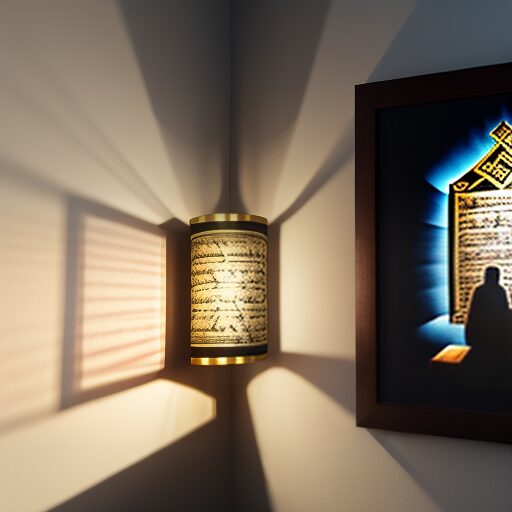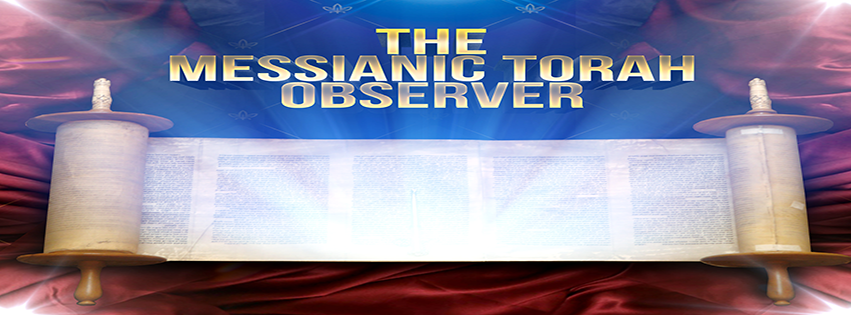
Why is the Month of the Aviv and its Embedded Feasts Important to us?
The Torah … a shadow of the good matters — good things — to come…(The Scriptures, 3rd edition. , Heb 10:1).
As I am recording and posting this installment of TMTO, we are heading into this week’s Sabbath on this beautiful Preparation Day in the DFW. And yes, we are in the midst of guarding the Month of the Aviv 2024. And as always beloved, it is our hope, trust, and prayer that this installment of TMTO finds you, your families, and fellowships well and blessed.
Setting the Tone
Understanding the significance of the Feasts of the LORD is essential in comprehending the depth of Yah’s Torah. These holy days, also known as Moedim, hold a profound symbolism that reflects the ongoing redemptive work of Yehovah for humanity. They are not merely religious observances, but a representation of the Creator’s continuous care and intervention in the lives of His people.
In exploring the rich traditions and interpretations surrounding the Moedim of Yehovah, there are various perspectives that provide valuable insights into the divine work in relation to humanity. However, for the purpose of this year’s focus on the Month of the Aviv and its embedded set-apart days, we will delve into the significance of these sacred occasions through the lens of the Plan of Salvation and Redemption, as revealed through the Person and Ministry of Yeshua Messiah.
An Outline of Yeshua as our Pesach
Passover, as recorded in the Exodus account, runs strikingly parallel to the historic Passion of our Master Yeshua in the Month of the Aviv in 28 CE (approximating using Rood’s Chronology).
Near the end of our harsh servitude in Egypt/Mitsrayim, Yah instructed Moshe that Aviv 1 would be our Rosh HaShanah — our New Year’s Day (Exo 12.1-2). Earlier this week I posted a discussion entitled “Welcome to Aviv 2024-A Brief Overview of the Month and a Discussion of What God Expects From Us This Month.” And if you’ve not had the opportunity to either listen to or read that post, I would humbly encourage you to do so as we went into reasons why the Month of the Aviv is so vitally important to us Messianics and what Yah expects from us during this month.
At that time, there remained one judgment plague Yah would strike our task-masters with. That plague would change the course of our destiny and put into motion our deliverance and redemption.
In gearing up for that final judgment-plague, Yah instructed that each of our households would select and take into our homes a perfect yearling lamb or goat on the 10th day of this Month of the Aviv (Exo 12.3-5). We were to keep that animal in our homes until the 14th of the month at twilight (Exo 12:6). At twilight (i.e. “ben,” in the afternoon of the 14th) we were to slaughter that animal. We were to take a portion of the blood of that animal and smear it upon the doorposts and lintel of our homes (Exo 12:7). We were to roast the carcass of the animal whole. Our entire household would eat that roasted animal along with unleavened bread and bitter herbs that evening, with our garments girded, our sandals on our feet, and our staff in our hands in haste (Exo 12:8-11). This was to be our Passover or Pesach.
In the interim of our taking part in this solemn ceremony on the eve of our deliverance, Yehovah wrought His final judgment against the gods and the pharaoh of Egypt — the killing of the entirety of Egypt’s firstborn (i.e. both man and animal). (Exo 12.12). As Yah passed through Egypt, He struck every firstborn. However, when He came upon dwellings where we’d earlier smeared the blood of the Pesach, He passed over and bypassed us (i.e. where we get the term Passover). In the early hours of the following morning, realization of the previous night’s devastation caused our taskmasters to urge us to leave their land. Our redemption and deliverance was at hand through the strong and mighty hand of Yehovah Elohim.
In like pattern, the story did not stop at the Month of Aviv and Pesach/Passover. Our deliverance from Egypt and trek across the Sinai wilderness would culminate in our historic arrival at the Mountain of God — Mount Sinai — some 50-days later. The timing of this coincides with the advent of Shavuot or Pentecost. Shavuot from an agricultural standpoint is the terminus of Yah’s Spring Feasts (i.e. the Wheat Harvest). Our arrival at Mount Sinai and Yah gifting us His Torah and covenant beautifully coincides with Yeshua fulfilling the tenets of the renewed covenant and gifting us His Father’s Ruach HaKodesh.
Every element of this historic event that Yah commanded us to rehearse each year at its appointed time in the Month of the Aviv, is brilliantly portrayed in the Person and atoning ministry of Yeshua Messiah. No detail of this solemn feast is wasted or missed in the redemption and salvation story that is our Master Yeshua.
Key Elements of the Spring Feast and their shadows
The following Passover elements feature prominently in both the original Passover Story and in our Master’s Passion:
- The Passover Lamb Enters our Lives on the 10th Day of the Month of the Aviv on the 10th day of the Month. And for four-days He underwent scrutiny by the religious leaders of the day. They found nothing lacking in Him. He was in every aspect of His being, the Perfect Lamb of Yah. He would be our Pesach. On the 14th day of the Month, He would be sacrificed on our behalf, having been found faultless. He was without sin. Thus, He who was without sin would become sin for us (2 Cor 5.21; Heb 4.15).
- Yeshua as our Pesach is killed on the 14th Day of the Month of the Aviv 28 CE., a Wednesday. There was no leaven in Him. His sacrifice cleanses us from all unrighteousness and we are justified before a holy and righteous God. Yeshua is buried before sunset on the 14th of Aviv and before the start of the Holy Day of the 1st Day of Unleavened Bread on the 15th day of the Month. Indeed, our Pesach — Yahoshua HaMashiyach — taketh away our sins through His Person and His atoning sacrifice. The Feast of Unleavened Bread is all about the removal of sin from our lives. Sin separates us from our Creator Yehovah our Elohim. Thus, without Yeshua’s Passion, we would be hopelessly lost and eternally separated from Abba Yah. But praise be to Yah, the author and finisher of our faith, we have through our Master’s sacrifice, been gifted the opportunity for an imputed righteousness. We are through Yeshua justified before the court of heaven and a holy and righteous God. That just leaves us to be about the work of walking in an exceeding righteousness that is worthy of our calling and aspirations to receive and enter the Malchut Elohim. This, beloved, is the shadow that is the Feast of Unleavened Bread. Seven-days where we deny ourselves the joy of leaven foods and where we’ve completely insulated ourselves from any and all leaven, representative of our lifelong sanctification through the work of the Holy Spirit.
- Yeshua is Resurrected 3-days and 3-nights on the 18th day of the Month, which that year in history would have been on the Day of the Wavesheaf Offering. Recall that the Wavesheaf Offering takes place on the “morrow after the [weekly] Sabbath [during the holy week of Unleavened Bread] (Lev 23.11-16). He was the firstborn from the dead (Col 1:15-18). Our Master was the Firstfruits of them that slept (1 Cor 15:20-23). Upon Yeshua’s resurrection, many dead saints are raised from their graves and are seen walking in Jerusalem. Thus begins our 50-day trek towards Shavuot/Pentecost. We who are His chosen ones, therefore, are, as James wrote, a kind of Firstfruits of Yah’s creatures (Jas 1.18).
Beloved, this is just scratching the surface of the multi-faceted, variegated spiritual tones and shadows of the Month of the Aviv and its embedded Spring Feasts.
Concluding Thoughts and Reflections
The Spring Feasts provide us with a shadow picture of Yeshua as the Suffering Servant and our Vicarious sacrificial Lamb Who takes away the sins of the world. He is the basis of our redemption and salvation.
From a framework perspective, the Spring Feasts depict our salvation through the Person and Ministry of Yeshua, our Messiah (Passover/Pesach); the Sanctification (FOUB); we becoming members of Yah’s Firstfruits (the Wavesheaf Offering); leading to the gifting of the Holy Spirit (Shavuot/Pentecost).
Conversely, the Fall Feasts foreshadow the coming Kingdom of Yah where Yeshua will reign as the Righteous Judge and King. Yeshua is our hope and our destiny as Yah’s new creation.
From a framework perspective, the Fall Feasts depict the Return of our Master and Savior (Yom Teruah); the Great Tribulation and Yah’s judgment of this world (Yom HaKippurim); and our receiving and dwelling in the Malchut Elohim (Sukkot and Sh’mini Atzeret).
We’ll continue this discussion in the coming days. In the meantime, I would be honored if you check out the following teachings on the coming Spring Feasts Season:
Shabbat Shalom; shavuatov; until next time, take care.
